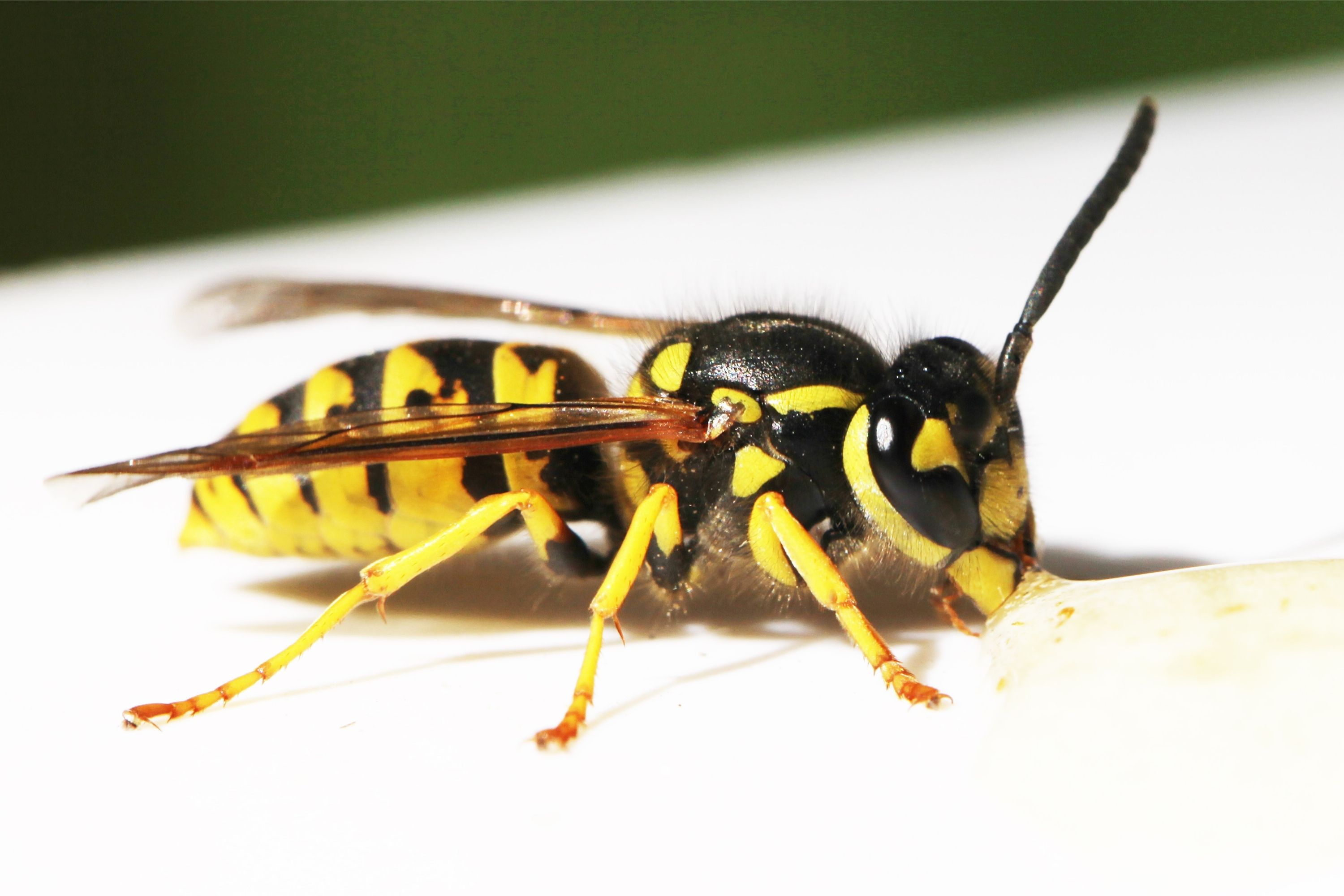Tree wasp
(Dolichovespula sylvestris)

Description
Dolichovespula sylvestris is a species of eusocial wasp in the family Vespidae, found in the temperate regions of Eurasia, particularly in western Europe. Despite being called the tree wasp, it builds both aerial and underground paper nests, and can be found in rural and urban habitats.D. sylvestris is a medium-sized wasp that has yellow and black stripes and a black dot in the center of its clypeus.It is most common to see this wasp between May and September during its 3.5 month colony cycle. Tree wasps carry out worker policing and have a haplodiploid sex-determination system; this results in a high level of relatedness within the colony. The workers will take over all of the foraging from the queen once the first workers reach adulthood. Worker wasps typically forage for other insects, the nectar of plants, and wood to digest for nest construction. The tree wasp is sometimes a victim of the nest parasite Dolichovespula omissa, who lays their eggs in the nest of D. sylvestris, as well as individual parasites including roundworms. D. sylvestris can be found throughout Western Europe and across central Asia to China, and it has also been sighted in northern Africa. It is not known to live outside of this region of the world. This species of wasp prefers temperate climates.In these regions it can be found in most habitats, including trees and shrubs, hanging from houses, and in the ground. It is often found in both urban and rural areas. Despite being called the tree wasp, D. sylvestris builds both aerial nests in trees and hedges, as well as underground nests. These underground nests are typically built near the ground surface in preexisting holes. All nests appear to need an overhanging structure to suspend from, such as a rock, grass stem, or roof of a house, but the location and type of these structures can vary significantly.
Taxonomic tree:







